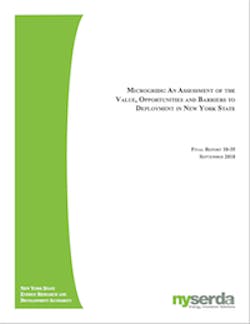Microgrid systems that link multiple distributed power generation sources into a small network serving some or all of the energy needs of participating users can provide benefits including reduced energy costs, increased overall energy efficiency and improved environmental performance and local electric system reliability. The growth of distributed generation combined with emerging technologies, particularly energy storage and power electronic interfaces and controls, are making the concept of a microgrid a technological reality. Still, energy market regulations and microgrid policy lag behind this progress, creating uncertainty and inhibiting investment in microgrids and the benefits they might provide.
This report examines the potential value of, as well as current pathways and barriers to deploying microgrids in New York State. It provides a typology of microgrid ownership and service structures and a series of case studies on existing and planned microgrid projects; explores the legal and regulatory framework that microgrid policy would be subject to in New York State; reviews the status of microgrids and microgrid policy in other parts of the United States; and examines microgrid value streams. This work is based on a detailed review of the literature on microgrids and distributed energy resources, legal research, and interviews with microgrid developers and state energy regulators from outside New York.
The paper concludes with recommendations for policymakers to facilitate investment in microgrids.
